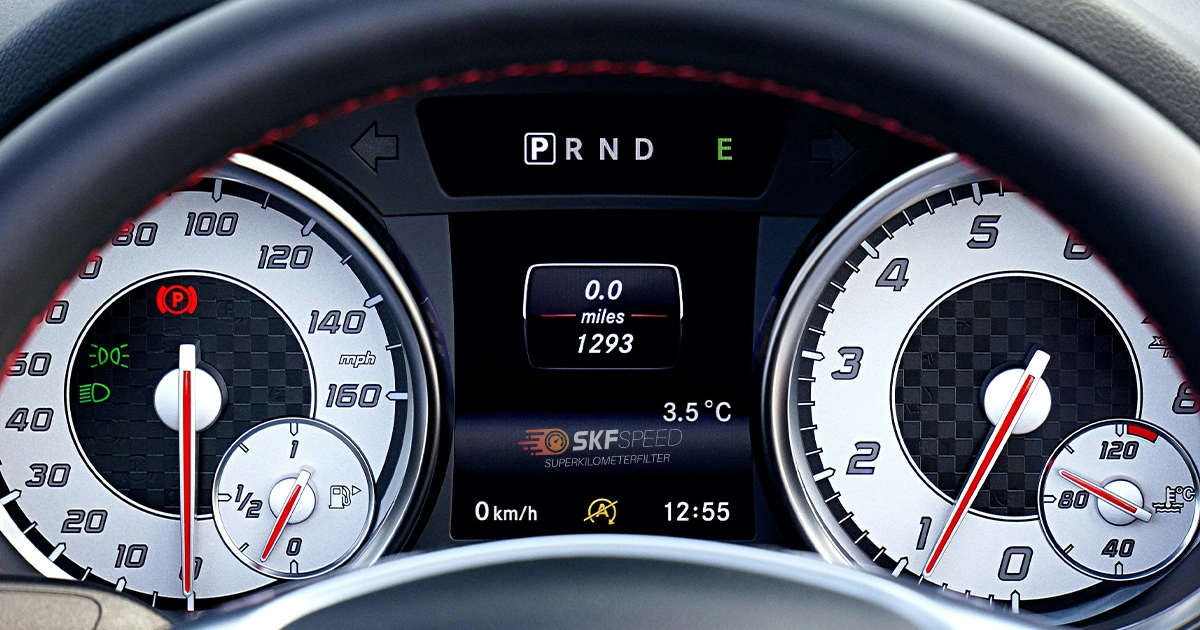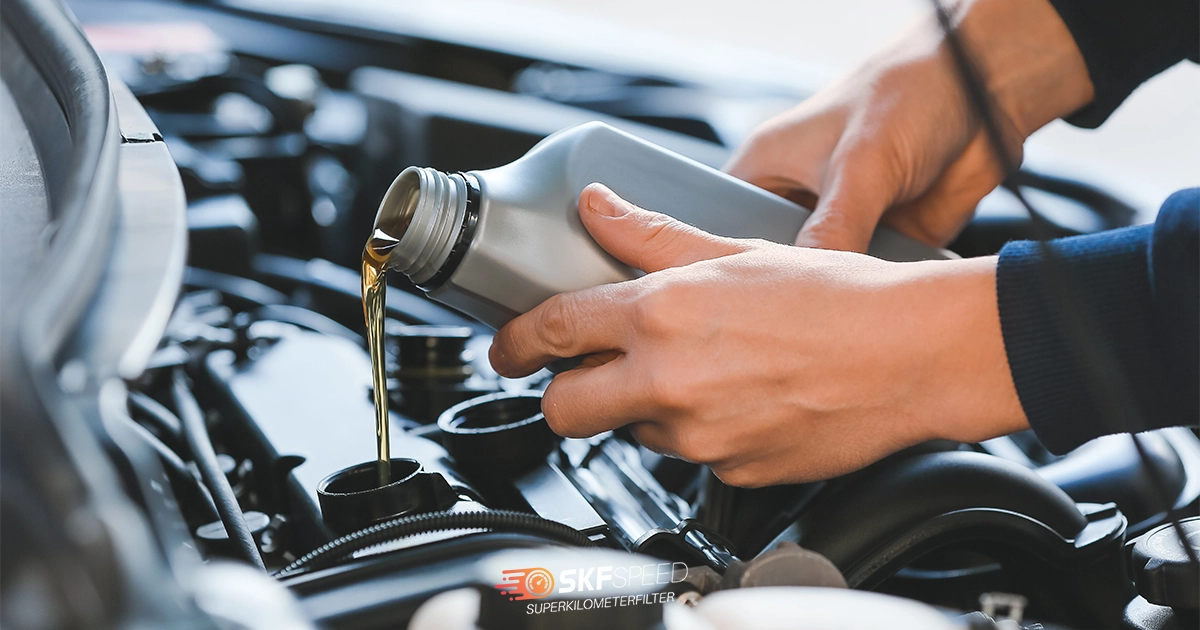
Odometer rollbacks are a huge challenge nowadays, and it’s necessary to know how to spot them. When purchasing a used car, one of the most critical factors to consider is its mileage. However, some shady sellers may manipulate the odometer to make the car look less worn and more valuable. This practice, known as odometer fraud, can leave buyers with a car that’s worth far less than they paid and potentially riddled with hidden issues.
In this blog post, we’ll explore what an odometer is and how you can protect yourself by learning to spot signs of odometer rollback.
An odometer is a device used in vehicles to measure and record the distance traveled. It’s an essential component that helps track a vehicle’s usage, which is crucial for maintenance schedules and determining a car’s value. Odometers work by counting the number of rotations made by the vehicle’s wheels and converting this data into miles or kilometers.
There are two main types of odometers:
Regardless of the type, odometers have a crucial role in a vehicle’s history and value. For instance, if a car has traveled 20,000 miles, the odometer will show that number, indicating to the driver exactly how much the vehicle has been used. They offer a rapid way to determine how much use a vehicle has received, which has an immediate impact on its wear and tear, prospective maintenance needs, and current value. This is why precise odometer readings are essential, and interfering with them can be both unlawful and immoral.

Detecting odometer fraud can be challenging, but there are several warning signs that smart buyers can look out for. By being cautious and knowing what to check, you can protect yourself from becoming a victim of this deceptive practice.
One of the easiest ways to spot potential odometer fraud is to carefully inspect the vehicle’s physical condition and compare it to the declared mileage. A vehicle with low mileage will have minimal wear and tear, while a high-mileage automobile will show more evidence of usage.
Focus on the following areas:
If you see major wear in these spots but the odometer displays low miles, it might be a warning signal. For example, a car with only 30,000 miles on the odometer shouldn’t have a heavily worn driver’s seat or a steering wheel that feels smooth from years of use. Similarly, if the pedal rubber has worn down to the metal, although the mileage is minimal, this discrepancy should be investigated further.
Obtaining and thoroughly studying a vehicle history record is an important step for detecting possible odometer fraud. These reports are accessible from companies such as Carfax or Auto Check. Always try to combine data from several sources to offer a thorough history of a car.
Here’s what to look for in a vehicle history report:
For example, if a vehicle history record reveals that a car had 80,000 miles during a service in 2021 but is currently being sold with just 60,000 miles in 2024, this is a strong indication of odometer rollback. Always compare the report’s facts to the seller’s claims and the vehicle’s actual condition to identify any differences.
A detailed examination of the odometer and the surrounding dashboard area may reveal evidence of manipulation. This is especially crucial for older automobiles with mechanical odometers, but even digital odometers can reveal signs of tampering.
Look out for these tell-tale signs:
For example, if the first figure of a mechanical odometer is either higher or lower than the others, it is possible that someone attempted to rewind the digits deliberately. In digital odometers, if you notice periodic flashes of different figures or the display appears to “jump” between readings, this might be a symptom of electronic interference. Always follow your senses; if something about the odometer or dashboard does not appear or feel right, it is always worth looking into more.
Personal inspections are useful and give you the feeling of being in charge. However, nothing surpasses the skilled eye of a professional technician for identifying odometer fraud. A competent technician may detect subtle symptoms of wear and tear that the ordinary customer would overlook. They may also conduct a thorough evaluation of the vehicle’s components, comparing their condition to what is expected for the reported mileage.
Professional inspectors frequently have access to advanced diagnostic equipment that may read the vehicle’s onboard computer systems and potentially reveal discrepancies in reported data. They may also detect traces of recent repairs or replacements, which may have been done to hide excessive mileage. Furthermore, professional mechanics are aware of model-specific wear patterns and typical problems, allowing them to swiftly recognize when a vehicle’s condition does not correspond to its stated age and mileage.

A seller’s actions can frequently provide important information regarding the accuracy of a vehicle’s mileage claims. Be careful of deception or inconsistency in their replies to your question concerning the car’s past. If the seller appears overly anxious to finish the deal fast or forces you to decide without time for a full examination, this might be a big red flag.
Pay attention to how the dealer describes the vehicle’s maintenance history. When they claim that the mileage is low but cannot offer current service documents, or if their explanation about the car’s history does not match its condition, proceed with caution. Keep an eye out for sellers who appear concerned with you bringing the automobile for a pre-purchase examination or who refuse to provide you with the vehicle’s title and registration documentation. Also, be aware of offers that appear too tempting to be true; an abnormally low price for an apparently low-mileage vehicle may signal underlying difficulties, such as odometer fraud.
In today’s digital era, buyers may use a variety of internet tools and smartphone applications to check a vehicle’s history and mileage. These materials might be quite useful in your effort to discover odometer fraud. Begin with well-known vehicle history report services such as Carfax or AutoCheck, which combine data from several sources to offer a complete summary of a vehicle’s history.
Aside from this, look for applications that allow you to verify a vehicle’s MOT (Ministry of Transport) history in the UK or comparable inspection reports in other countries. Some applications even allow you to scan a car’s VIN code to view its history quickly. Mileage verification tools, such as Mileage Verify, can assist you in determining whether the current odometer reading is consistent with previously recorded mileage. Don’t forget about government resources: many motor vehicle offices provide internet services for checking a car’s title history. While these techniques are not perfect, adopting a combination of them can considerably improve your odds of discovering anomalies.
The Super Kilometer Filter team created the Mileage Blocker specifically for car testing. It enables testers to work more effectively and analyze autos without worrying about tallying up needless miles throughout the testing process. Despite their intended use, mileage blocks are used unethically to modify odometers due to their undetected performance. Remember that these gadgets should not be utilized on public highways; everyone must adhere to local laws and regulations.
The mileage blocker has different settings, allowing you to effortlessly adjust to the level that suits you best. The SKF team developed a mobile app that lets you operate the device with your smartphone. Furthermore, this innovative product has simple installation instructions that anybody may follow. You can purchase the mileage blocker online directly from the SKF website. Feel free to contact customer care or support if you need any more information.
It’s essential to stay vigilant when buying a used car to detect that the odometer has been rolled back. Inspect thoroughly, check history, and watch for tampering signs. Use professional help and online tools when needed. Trust your instincts and be wary of suspicious seller behavior. A little caution goes a long way in avoiding odometer fraud and ensuring a smart purchase.






Here you will find all the details about our company
Here you will find shipping and return related information
Here you will find information on all technical questions
Here you will find helpful information about installation